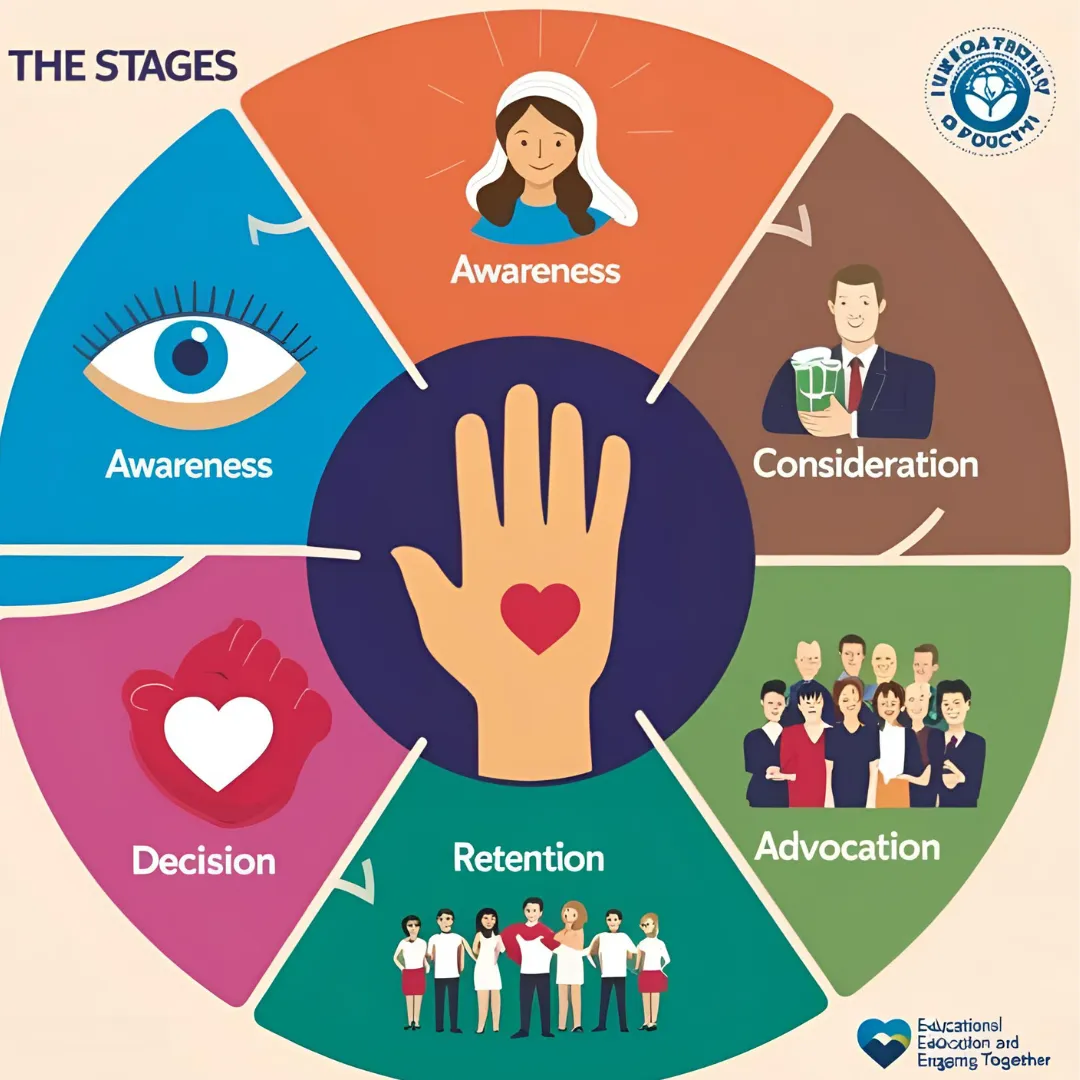
From Leads to Loyal Customers: Nurturing the Buyer’s Journey
Introduction
Capturing leads is just the start. What truly drives business growth is effectively guiding those leads through the entire buyer’s journey—transforming casual prospects into long-term, loyal customers. A nurturing process isn’t just about more sales; it’s about creating a positive experience that builds trust, encourages repeat business, and sparks valuable word-of-mouth referrals.

In this guide, you’ll learn how to nurture leads step by step, ensuring they not only convert but stay with you for the long haul.
Why Nurturing the Buyer’s Journey Matters
Stronger Relationships: Consistent engagement builds trust and loyalty.
Higher Conversion Rates: Well-nurtured leads are more likely to buy when they’re ready.
Reduced Acquisition Costs: Retaining and upselling existing customers is cheaper than finding new ones.
Positive Brand Perception: A well-guided experience enhances your reputation and drives referrals.
1. Map Out Each Stage of the Buyer’s Journey
Purpose: Understand what your prospects need at every step—from awareness to advocacy.
Stages to map:
Awareness: Prospect discovers a pain or need.
Consideration: Researching solutions, comparing options.
Decision: Choosing a vendor or product.
Retention: After the sale, ensuring satisfaction and loyalty.
Advocacy: Delighted customers refer others and become brand ambassadors.
Example: A marketing consultant outlines how a cold lead finds her blog (awareness), signs up for a free guide (consideration), books a consultation call (decision), and then becomes a returning client who refers friends (retention/advocacy).
2. Provide Targeted Content and Offers at Each Stage
Purpose: Deliver the right information at the right time, addressing concerns or questions that lead to the next step.
How to do it:
Awareness: Educational blog posts, YouTube tutorials, social media insights.
Consideration: Case studies, comparison guides, personalized email sequences.
Decision: Free demos, trials, or direct consultations.
Retention: Exclusive offers, loyalty rewards, ongoing support.
Advocacy: Referral programs, testimonials, user-generated content.
Example: An HR software company emails prospects a case study once they’ve downloaded a hiring checklist, nudging them toward a demo if they’re interested in deeper solutions.
3. Use Automation to Personalize Follow-Ups
Purpose: Save time while maintaining relevant, timely communication.
Tactics:
Segment leads by behavior (e.g., clicked a specific link, visited a certain page)
Automate drip campaigns that address likely questions
Trigger special offers when leads engage with certain content
Example: A fitness coach automates segmented email follow-ups based on whether a lead downloaded a nutrition guide or a workout plan, tailoring the messaging accordingly.
4. Encourage Two-Way Engagement
Purpose: Nurturing isn’t just sending emails—it’s building relationships through conversations.
Channels to use:
Chatbots or live chat for quick Q&A
Social media groups or communities
Webinars or live events for real-time interaction
Example: A real estate agent hosts monthly live Q&A sessions on Facebook, inviting leads to get personalized answers, thus building trust and rapport faster.
5. Provide Exceptional Post-Sale Support
Purpose: Retaining a customer is far more profitable than acquiring a new one—and fosters word-of-mouth.
How to do it:
Automate onboarding materials or tutorials
Send check-in emails or SMS to ensure satisfaction
Invite customers to share feedback, success stories, or product ideas
Example: A software startup automates a 30-day check-in email to new clients, ensuring they’re using key features and reminding them of available support resources.
Tools to Nurture Leads into Loyal Customers
Ignite Business Software – All-in-one CRM and marketing automation for lead segmentation, drip campaigns, and follow-up.
Mailchimp / ActiveCampaign – Build targeted email sequences for each buyer stage.
ManyChat / Intercom – Automated chatbots to handle real-time engagement on websites or social media.
Zoom / WebinarJam – Host virtual events or Q&A sessions to address deeper questions.
Questions to Refine Your Buyer’s Journey
Have I clearly outlined each stage of the buyer’s journey for my business model?
Am I delivering the right content or offer based on the lead’s stage or behavior?
Which parts of the journey can I automate for more consistent follow-up and personalization?
How am I creating two-way conversations to build deeper trust?
Benefits of a Well-Nurtured Buyer’s Journey
Higher Conversion Rates: Leads feel guided and informed, making buying decisions easier.
Stronger Customer Loyalty: Great experiences lead to repeat sales and referrals.
Lower Marketing Costs: Engaged leads convert more readily, reducing wasted ad spend.
Effortless Upsells: When trust is built, customers are open to premium offerings or cross-sells.
FAQs
Q: How long should a lead nurturing sequence be?
A: It varies. Some businesses see quick conversions (1–2 weeks), while others need longer cycles (2–3 months). Tailor your sequences to the complexity of your product and buying process.
Q: Can smaller businesses effectively nurture leads with minimal staff?
A: Absolutely. Automation tools help deliver personalized touches without large teams. Even a solopreneur can manage robust nurturing with the right systems.
Q: How do I handle unresponsive leads?
A: Keep them in a less frequent nurture cycle. Send occasional check-ins or new offers. If they remain unresponsive, gracefully remove or segment them as inactive.
Conclusion
Transforming leads into loyal customers is a journey—one that requires deliberate touchpoints, relevant content, and authentic conversations. By mapping each stage, personalizing interactions, automating follow-ups, and supporting post-sale experiences, you’ll see more conversions, stronger loyalty, and a healthier bottom line.
Want to see how businesses seamlessly nurture leads and grow long-term relationships?
Check out this insightful case study for real-world examples.
